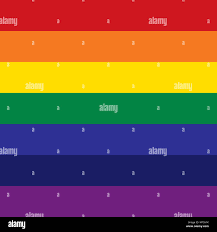
The indigo color has been a significant part of human expression and creativity for centuries. This deep, rich hue evokes a sense of mystery and serenity, drawing its admirers into its depths. From ancient civilizations to modern design, the indigo color has held various meanings and applications. In this comprehensive exploration, we will delve into the origins, cultural significance, scientific aspects, artistic applications, and contemporary relevance of the indigo color.
Table of Contents
The Origins of Indigo Color
The indigo color has roots that trace back thousands of years. Its name is derived from the Latin term “indicum,” which means “from India.” This is a fitting tribute, as the subcontinent has been a primary source of indigo dye for centuries. The dye is derived from the leaves of the Indigofera plant, which thrives in tropical and subtropical climates. The process of extracting the dye involves fermentation and oxidation, a technique that ancient cultures perfected.
Historically, the indigo color was a luxury commodity, often reserved for royalty and the wealthy elite. In ancient Egypt, for instance, indigo-dyed fabrics were used in burial shrouds, highlighting its importance in the afterlife. Similarly, in the Mayan civilization, the indigo color symbolized fertility and was often used in ceremonial garments.
The trade of indigo became a significant economic driver in many regions. During the 17th and 18th centuries, indigo was exported from India to Europe and America, where it was used to dye textiles. The demand for indigo color led to the establishment of plantations, particularly in the Caribbean and the American South. The cultivation of indigo became a point of contention in the era of colonialism, as it involved the exploitation of enslaved laborers.
The Science of Indigo Color

From a scientific perspective, indigo color is fascinating. It exists in the spectrum of visible light between blue and violet, with a wavelength ranging from approximately 445 to 450 nanometers. This unique positioning gives indigo color its distinct depth and richness.
In color theory, indigo color is often associated with feelings of calmness, stability, and introspection. Psychologically, it is believed to stimulate the mind and encourage deep thought and reflection. This connection to mental states makes indigo color a popular choice in design, art, and spirituality.
In the context of light and color mixing, indigo color can be produced by combining blue with small amounts of red. This mixture creates a complex shade that can vary in intensity depending on the proportions used. Artists often utilize this characteristic to create depth in their works, enhancing the visual experience for the viewer.
Cultural Significance of Indigo Color
The indigo color holds profound significance across various cultures. In India, the dyeing technique has been passed down through generations, with indigo textiles becoming a symbol of cultural heritage. Traditional garments like saris and turbans often feature intricate designs dyed in indigo color, showcasing craftsmanship and artistry.
In Japan, indigo color is celebrated through the art of shibori, a traditional tie-dye technique that results in stunning patterns and shades. Known as “aizome,” Japanese indigo dyeing has been refined over centuries, producing garments that embody both beauty and cultural history. The deep blue of aizome is considered a protective color, warding off evil spirits.
African cultures also embrace indigo color, often using it in textiles that convey stories and identity. The indigo cloth of West Africa, adorned with intricate designs, serves as a canvas for expressing community heritage and pride. The indigo color symbolizes not only beauty but also resilience and strength.
In the context of spirituality, indigo color is associated with the third eye chakra in various belief systems. This chakra is linked to intuition, perception, and higher consciousness. As such, the indigo color is often used in meditation spaces and spiritual practices, fostering a sense of inner peace and clarity.
The Role of Indigo Color in Art
Throughout art history, the indigo color has played a vital role in conveying emotion and depth. Artists from various movements have embraced this hue, recognizing its ability to evoke a wide range of feelings. The Impressionists, for example, utilized indigo color to create atmospheric effects in their landscapes, capturing the transient nature of light and shadow.
In the 20th century, artists like Yves Klein and Mark Rothko further explored the expressive potential of indigo color. Klein famously created a specific shade of blue known as “International Klein Blue,” which is often compared to indigo for its intensity. Rothko’s large color field paintings frequently incorporated shades of indigo color, inviting viewers to experience profound emotional responses.
Contemporary artists continue to experiment with indigo color, using it as a symbol of cultural identity, environmental awareness, and personal expression. The revival of traditional dyeing techniques, coupled with modern art practices, has created a renewed interest in the indigo color as a medium for storytelling and connection.
Indigo Color in Fashion and Design
The influence of indigo color extends beyond art into the realms of fashion and interior design. In fashion, indigo denim has become a timeless staple, symbolizing both casual style and durability. The rise of sustainable fashion has prompted designers to explore natural indigo dyeing methods, reflecting a commitment to environmental responsibility.
Fashion designers often incorporate indigo color into their collections, recognizing its versatility and appeal. From haute couture to streetwear, the indigo color adds an element of sophistication and depth to garments. Its ability to pair well with various colors makes it a favorite choice for designers seeking to create visually striking ensembles.
In interior design, indigo color has gained popularity for its calming and grounding properties. It is often used in living spaces to create a serene atmosphere, encouraging relaxation and contemplation. The use of indigo color in textiles, wall paints, and decor can transform a room into a peaceful sanctuary.
Moreover, indigo color can serve as a focal point in design, drawing the eye and creating a sense of balance. Designers frequently use it in combination with neutral tones or other vibrant hues, allowing the indigo color to shine while harmonizing with the overall aesthetic.
The Environmental Impact of Indigo Dyeing

While the indigo color is celebrated for its beauty and significance, the methods of dyeing have historically raised environmental concerns. Traditional indigo dyeing practices, particularly in the 19th and 20th centuries, often involved chemical processes that contributed to pollution and ecological damage.
In response to these issues, there has been a growing movement toward sustainable dyeing practices. Natural indigo, sourced from plants, is experiencing a revival as artisans and designers seek eco-friendly alternatives. These practices prioritize environmental stewardship and community engagement, ensuring that the beauty of indigo color can be enjoyed without harming the planet.
The shift toward sustainability has also sparked interest in organic cotton and other natural fibers, further enhancing the appeal of indigo-dyed textiles. Consumers are becoming more conscious of their choices, driving demand for products that align with ethical and sustainable values.
The Future of Indigo Color
As we look ahead, the indigo color will undoubtedly continue to evolve and inspire. The integration of technology in the art and fashion industries offers new avenues for exploring this rich hue. Digital printing and design tools enable artists and designers to experiment with indigo color in innovative ways, pushing the boundaries of traditional applications.
Moreover, the focus on sustainability will likely shape the future of indigo color in fashion and design. As consumers prioritize eco-friendly options, the demand for natural indigo dyeing methods will increase. This resurgence will not only preserve traditional practices but also encourage new generations of artisans to embrace the beauty of indigo color.
In addition, the emotional and psychological impact of indigo color will continue to resonate in various fields. Its calming and introspective qualities make it a valuable choice for wellness spaces, meditation practices, and therapeutic settings. As society navigates the complexities of modern life, the appeal of indigo color as a source of tranquility and reflection will remain relevant.
Also read Vermin Supreme The Iconic Satirist Shaping Political Discourse
Conclusion
The indigo color is more than just a hue; it is a rich tapestry woven through history, culture, and human experience. From its origins in ancient dyeing techniques to its modern applications in art, fashion, and design, the indigo color has maintained its significance and allure.
As we celebrate the depth and beauty of indigo color, we recognize its ability to connect us to our past, inspire creativity, and promote sustainability. Whether used in textiles, art, or design, the indigo color continues to captivate hearts and minds, reminding us of the power of color in our lives.
In embracing the indigo color, we invite its essence into our world—a color that symbolizes introspection, creativity, and cultural heritage. The journey of indigo color is far from over; it is an ever-evolving narrative that will continue to shape our perception of beauty and meaning for generations to come.




